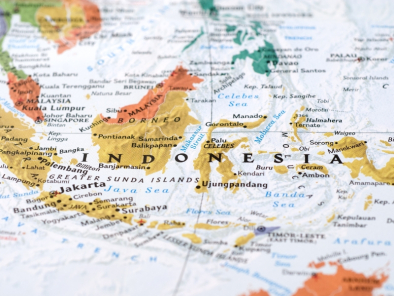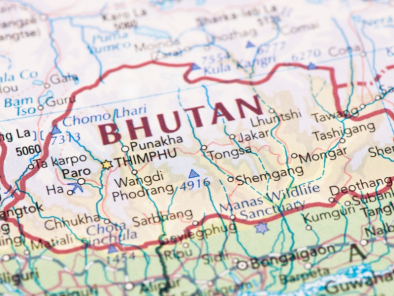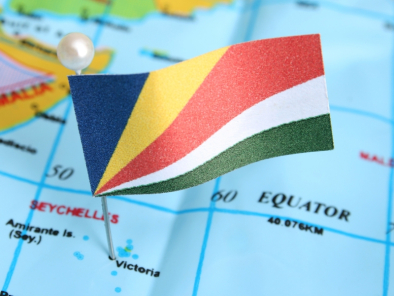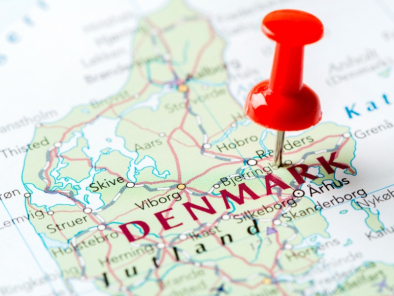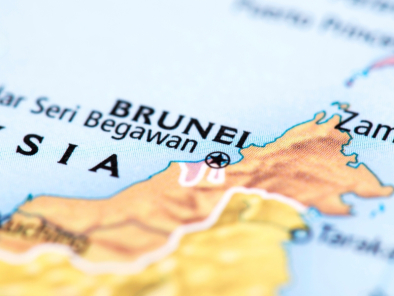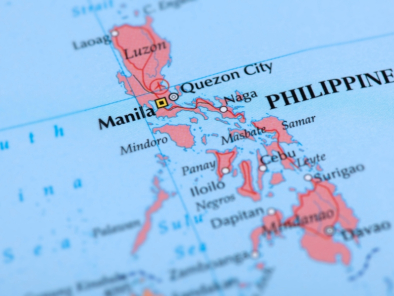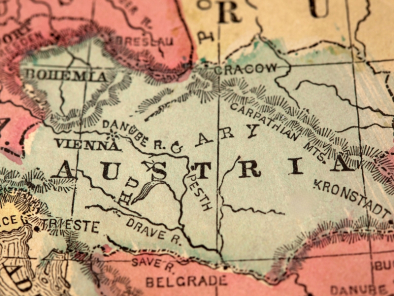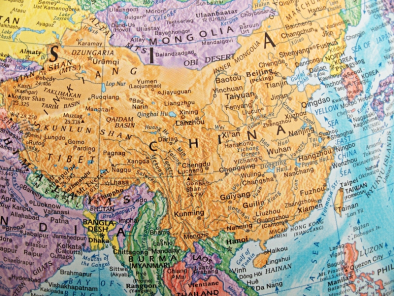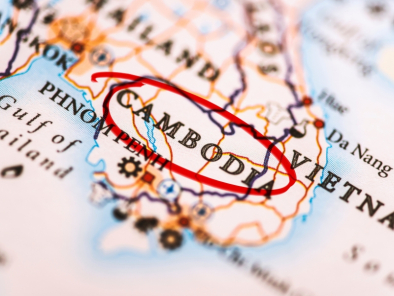
Posted by: Leo Travel Hub
At the
present, more of
Many
of the provincial towns offer a combination of colonial architecture, sleepy
riverside locations and some very friendly local people. The best of these to
visit are Kompong Cham and Kompong Chhnang, and probably the most
satisfactory is Battambang.
Situated
on the Indochina peninsula,
VISA: The visa should be obtained prior to arrival in the country.
GETTING THERE:
By Air: there are no direct flights from India but there
are direct flights to the capital, Phnom Penh from Bangkok, Hanoi, Ho Chi Minh City, Hong Kong, Kuala
Lumpur, Singapore, and Vientiane. From
Direct flights exist from
-
- Siem Reap
-
- Airport
Tax: (subject to change)
-
Foreigner: USD25
-
Cambodian: USD18
Domestic:
-
Foreigner: 6USD
-
Cambodian: 5USD
By Road:
By Waterway: Another exotic way to reach
CLIMATE:
Nov-Feb,
cool/dry
Mar-May,
hot/dry
Jun-Aug,
hot/wet
Sep-Oct,
cool/wet
The
ideal months to be in
The monsoon can be a spectacular time to visit. Most falls as extremely
heavy rainfall in cloudbursts accompanied by thunder and lightning, occurring
each afternoon for around an hour. However, the Monsoon can make things
difficult for tourists, many trekking areas become impassable, and the
increased force of the Mekong flowing into the Tonle Sap river actually reverses the flow of the lesser river -
backing it up to the
The best time for most tourists to visit is at the end of the rainy
season, from Oct-Jan. The land
appears at its lushest and temperatures are yet to hit the summer highs, being
still warm but not excessively so.
CLOTHING:
Comfortable lightweight clothing in natural fabrics
as cotton is most suitable for travelling to
TIME:
CURRENCY:
The official
currency of Cambodia is the Riel (CRI), abbreviated
by a lower-case 'r' written after the sum. Notes are in denominations of
100,000, 50,000, 20,000, 10,000, 5000, 2000, 1000, 500, 200 100. The
Most places deal in US Dollars particularly for items more than CRI10000 in value. It is advisable to carry a small amount of riel with you for small purchases, but the balance of your cash should be in dollars
LANGUAGE:
Khmer, secondary languages are English and French
ELECTRICITY:
The electrical current is 220 volts, AC 50Hz in
TIPPING:
Tipping isn’t obligatory but is widely practiced in hotels and restaurants in addition to the service charges shown on bills
GETTING AROUND:
By Air: The easiest way of getting around
Flying
is the quickest but expensive way of getting to places like
By Waterways: With some
1900km of navigable waterways to utilize, boats play a major role in getting
around. The most popular services operate between the capital and Siem Reap -
the express service cuts the journey time down to a mere four hours. Fast boats
also head up the
By Taxis: An effective
local bus network makes travel to sights around
By road: To Sihanoukville
from
By train: Until relatively recently foreigners
were not allowed on the trains, but that particular ban is no longer enforced.
You should note that foreigners do pay more than locals for their fares (usually
double), but the rate is still so low that there's little point making a fuss
about it.
There are only two lines, both extending from
The standards onboard are not very high. Foreigners at least will be ushered to
one of the carriages with seats, the bulk of the train is often made up of
flatbed or covered freight wagons, upon which people sit. Trains stop at towns
and villages to allow salesmen and food vendors onboard.
Whether wanting to catch a train or not it is worth visiting
By bus: Buses and
coaches are the mainstay of the national public transport network. They range
from super-modern vehicles to ones that by all rights should have been scrapped
years ago. All are privately operated from local bus stations. You are advised
to try to buy your ticket in person as far in advance of travel as possible.
Air-conditioned
buses
from
You should note that it is most convenient to
travel everywhere in a city via taxi, motodop or bicycle rickshaw.
Prices are low enough to make it practical
and seeing as most places seem to be navigated by name rather than address it's
the easiest way to locate anything.
If you're going to the Killing Fields, take a taxi rather than a motorbike, as the road is very potholed and dusty.
CITIES:
The
crumbling colonial architecture makes an attractive backdrop to bustling
streetside cafes and the redeveloped riverfront precinct - a particularly
lively part of town on Friday and Saturday nights. The city has several
impressive Wats (temple-monasteries),
including Wat Ounalom (headquarters
of the Cambodian Buddhist patriarchate), Wat
Phnom (the hilltop pagoda which gave the city its name) and the newly
painted Wat Lang Ka. Pride of place
goes to the spectacular Silver Pagoda,
one of the few places in
MUST SEES:
The
The
official home of King Norodom Sihanouk, the
The
predominant colours are yellow, representing Buddhism, and white,
representing Brahmanism. As it is the home of the King, much of the palace
complex is off-limits, but visitors have access to the Chan Chaya Pavilion,
from where the King and head of state deliver their speeches to the nation. You
can also see the impressive Throne Room and the quirky iron pavilion of
Napoleon III, a gift to King Norodom in 1876.
The palace grounds are open to the public.
Open: 07h00-17h00. Additional charges for cameras and videos are payable. Note that a guide is needed for some parts of the palace at an additional charge
Silver Pagoda:
Also
known by the name "The
The temple is home to a host of other treasures including glittering Buddhas
made of gold, silver, jade and of course the exquisite Emerald Buddha. Many
of these ancient statues are studded with precious stones. Along the walls of
the compound a mural depicts the tale of the Ramayana, while outside the temple
various stupas house the ashes of past royalty.
Open: 07h30-11h00 & 14h30-17h00.
This
deep-red building built in traditional Khmer pagoda style looks far more
venerable than its age suggests. Only built in 1913 the museum is today home to
thousands of cultural artefacts, some dating back to the 4th century. The
collection also contains many Angkorian statues, which miraculously
escaped damage or destruction during the Khmer Rouge years. These include rare
sculptures of some of the kings of that time - most notably Jayavarman VII,
considered the greatest of the
The museum is inhabited by thousands of bats, which, around sunset, when
the museum guides stir them into action, take flight in droves, making for a
remarkable sight. The courtyard in the centre of the complex, complete with
ponds, pagodas, and formal plantings is an incredibly peaceful sanctuary from
the city outside, and from the squeaking of the bats that is a constant
companion to any tour of the galleries.
Open: 08h00-11h00 & 14h00-17h00
An incredible 17,000 men, women and children were brought here to face Pol
Pot's torturers before being taken to the Killing Fields. Each of the small
classrooms contains a rusting bed where the torture was carried out. Each room
also contains a photograph of the last victims found in 1979 as the
liberating Vietnamese army marched on
Macabrely the Khmer Rouge documented and photographed their victims
meticulously - as can be seen in the rooms downstairs.
The
Killing Fields:
For
those that survived the torture at Tuol Sleng, Choeung Ek, 9km outside
of the capital, was their final destination. To Westerners these are better
known as "The Killing Fields", having been the subject of the 1984
Oscar-winning film of the same name that told the true story of the horrors
that were perpetrated here.
At first glance, the grassy area looks innocuous enough, but wandering around
the fields reveals the pits where mass graves were found. Shreds of prisoners'
clothing from the recent exhumations can still easily be seen, poignant
reminders of the inhumanity of the killings. Beyond the pits that are uncovered
lie many more that have been left untouched - permanent graves to the thousands
that occupy each one.
The sheer scale of the site is a stunning indictment against the brutality
of the Khmer Rouge. People brought here were clubbed to death to save
ammunition before their bodies were piled into the vast pits, one on top of
another. The central memorial stupa contains thousands of skulls - an estimated
8,000 of them - recovered from the unmarked graves. The Killing Fields of
Choeung Ek are a grisly reminder of the atrocities committed by the Khmer
Rouge. Some 17,000 people were killed here, just 15km south-west of the city
centre, and more than 8000 skulls, arranged by sex and age, are visible behind
the glass panel of the Memorial Stupa, which was erected in 1988.
SIEM REAP:
Nestled
between rice paddies and stretched along the Siem Reap River, the small provincial capital of
The
town of
Accommodation
and food can be found in the town of
For hundreds of years these temples lay forgotten, and in many places were
reclaimed by the surrounding forest. It was only in the 1800s that French
naturalist, Henri Mouhot, brought
them to the world's attention. Looting
became a huge problem and continues to this day, with many of the statues being
removed or decapitated. But commitment to the preservation of the temples remains
strong and visitors continue to be enchanted by the legacy of the Khmer
culture.
Tickets
for the temple site are sold for either one, three or seven days. A one-day
pass will give you enough time to see the main temples, whereas if you want to
explore further sites it is definitely necessary to purchase extra days. You'll
need a passport photo for your pass, but if you forget it there's a free photo
service at the gate.
The
celebrated temples of Angkor are
Apart
from Angkor Wat, two other magnificent temples to visit are the Bayon and Ta
Prohm.
The film Tomb Raider was shot at
Sihanoukville:
As
tourism returns to
If it's diving or snorkelling you want, Koh Pueh and Koh Koang Kang are the
places to go. Idyllic islands of lush vegetation and green fringed beaches the
waters here teem with life and are always crystal-clear.
A boat from Sihanoukville takes about an hour to reach the closest beach. If you prefer your fish out of the water you can take a fishing trip, with charters leaving from the fisherman's port each morning. Back on the mainland, nearby Ream National Park offers a 21,000-hectare sanctuary of wetlands, undiscovered beaches and riverboat trips.
Bokor Hill Station:
Not
far from Sihanoukville you'll find this interesting relic of French colonial
times. During their years of rule, the French came to the cool heights of Bokor
to escape the heat of the plains and to get away from it all - tantamount to a
colonial theme park. Today, the old hill station, hotel and casino lie
abandoned and crumbling, but it still makes for a fascinating trip. On a clear
day, the views over the jungle are endless.
If the weather is hot a swim at the Popokvil waterfalls is the recommended way
to cool off. The ranger station at the entrance to the surrounding national
park provides accommodation and guides for extended visits.
Dolphin
Watching at Kratie
For
those that are passionate about wildlife, Kratie,
north-east of
The local dolphins are known to swim in small groups and, despite having a
reputation for being shy, have a unique working
relationship with Kratie's fishermen, driving fish into their nets. The
fishermen, in return for a good catch, toss the dolphins a portion of the fish
from the boat, ensuring that the dolphins keep coming back. Locals are often
willing to hire out their boats to allow a closer look at these rare creatures.
BATTAMBANG:
Despite
being
The
Around Battambang the crumbling wats are being restored to their former glory
following decades of neglect. Many of them date back centuries and are built in
the distinctive Khmer style. The most popular include the ruined Wat Ek Phnom and Wat Banan, both easy day trips from the city. For many visitors the
town functions as a jumping off point for tours with the surrounding
countryside, one of the most accessible genuinely rural areas of the country,
filled with paddy fields and terraces that provides the staple rice crop for
the entire nation.
Ratanakiri
Province:
This province suffered greatly from the
The various hill tribes continue to live as they always have, practicing slash
and burn farming and hunting with poison for their food. Tribal customs such as
women tattooing their faces are still commonplace, and seeing these genuine tribes
people is a far cry from the sanitized indigenous "theme-park"
villages that are offered to tourists elsewhere. Jungle trekking, on foot or by
elephant, and trips to the volcanic
SHOPPING:
Shops tend to open daily from 08h30 or 09h00 to 18h00. Smaller shops will normally close from around 11h00 for a long lunch (2-3hrs). Tourist stores normally keep longer hours. In smaller towns shops may keep erratic hours and may close for a specific day each week.
EVENTS:
Lunar New Year is celebrated by ethnic
Chinese and Vietnamese in late January or early February. The Khmer New Year celebrations bring the
country to a standstill for three days in mid-April - a fair amount of water
and talcum powder gets thrown around at this time, so it's a lively time to
visit. Chat Preah Nengkal, the Royal
Ploughing Festival, takes place near the Royal Palace in Phnom Penh in early May. The Khmer calendar's most
important festival is Bom Om Tuk,
celebrating the end of the wet season in early November - it's the best time to
visit
FOOD:
As in many Asian Countries, the staple food of the Cambodian diet is rice. This is usually served with dried, salted fish, chicken, beef or pork. Popular dishes include sam chruk, a roll of sticky rice stuffed soya bean and chopped pork, and amok, a soup of boneless fish & coconut spices. There are several Indian restaurants available also.
DOS AND
DON’TS:
-
Remove your hat or scarf when talking
with Buddhist monks. Naturally, they would forgive you the cultural faux pas,
but it is respectful all the same.
-
When
bargaining for that "must-have" souvenir, remember that the few
hundred riels you are haggling over are probably worth nothing to you but could
make a very big difference to a Cambodian.
-
As
with many Asian countries, when giving or taking from another person, be sure
to use your right hand as a mark of respect. The left hand is for ablutions.
-
Tipping is not part of the local
culture although many locals do their very best for tourists in all
circumstances in the hope of making a few extra bucks. Consider leaving a small
tip for staff, it can make a big difference to them.
-
There
are many amputees who have suffered the consequences of landmines and whose
only income is through begging. It is part of Buddhist culture to give
to those less fortunate, so do feel free to give if you feel it is right.
-
Khmer
people dress modestly and visitors would do well to follow their example.
Do not wear skimpy clothing. Besides, long, loose clothing is more appropriate
for the tropics.
-
Don't
point your feet at people or in the direction of Buddha.
-
Don't
pose next to statues of the Buddha for photographs. These statues are sacred
and draping yourself around them is considered a definite no-no.

